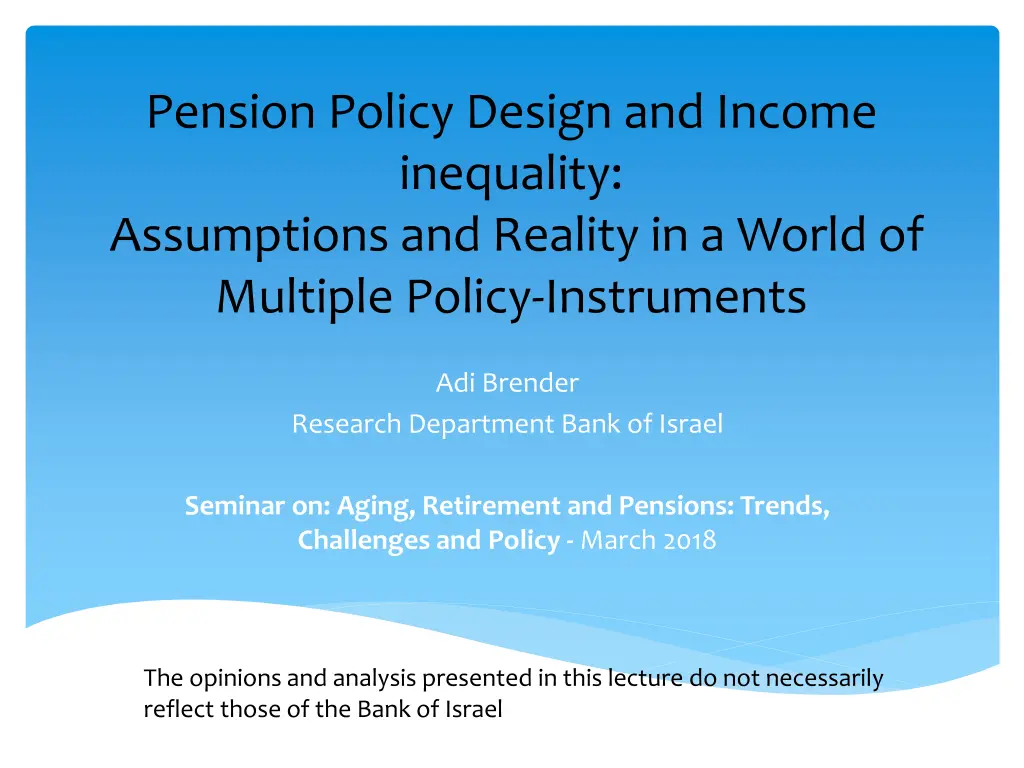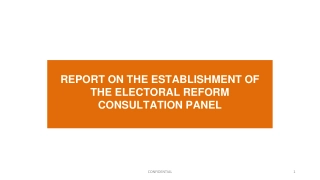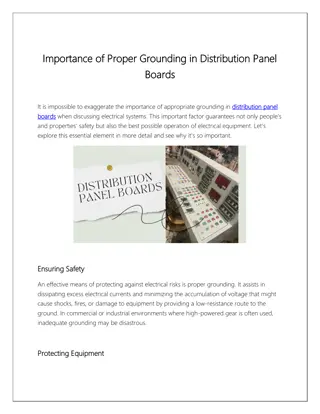
Pension Policy Design and Income Inequality Insights
Explore the discrepancies between assumptions and reality in pension policy design regarding income profiles, work status based on spouse's income, and considerations for individuals versus families. The study delves into the complexities of income distribution, wage patterns, and household characteristics impacting pension planning.
Download Presentation

Please find below an Image/Link to download the presentation.
The content on the website is provided AS IS for your information and personal use only. It may not be sold, licensed, or shared on other websites without obtaining consent from the author. If you encounter any issues during the download, it is possible that the publisher has removed the file from their server.
You are allowed to download the files provided on this website for personal or commercial use, subject to the condition that they are used lawfully. All files are the property of their respective owners.
The content on the website is provided AS IS for your information and personal use only. It may not be sold, licensed, or shared on other websites without obtaining consent from the author.
E N D
Presentation Transcript
Pension Policy Design and Income inequality: Assumptions and Reality in a World of Multiple Policy-Instruments Adi Brender Research Department Bank of Israel Seminar on: Aging, Retirement and Pensions: Trends, Challenges and Policy - March 2018 The opinions and analysis presented in this lecture do not necessarily reflect those of the Bank of Israel
Income Profiles Assumption: Examining the average is good enough. Wages increase monotonically (weakly) over the years. Pensions need to replace a (high) proportion of the last wage. Reality: Wage patterns differ between people Low income at early years is associated with flatter wage profiles (1%-1.5% real avg. annual differential) and with spouses with lower wage or employment tenure. Significance Different required contribution rates. Given a (more or less) fixed monthly social security old-age allowance, low income individuals need to contribute even less.
Income distribution within cohorts is persistent Income quintile in 2015 Income quintile in 2000 1 2 3 4 5 1 2 3 4 5 40.0 19.9 10.0 7.2 4.3 33.0 36.3 16.9 7.7 4.4 17.6 30.1 36.6 16.2 6.1 7.4 11.1 30.0 43.2 16.3 2.0 2.6 6.5 25.6 68.8 Wage distribution of employees aged 35-50 in 2000 who worked in 2015.
Work Status Given the Spouse's Income Wife's Income Quintile (among those who work) Husband's Income Quintile Wife Doesn't work 1 33 25 20 14 12 14 2 24 25 22 18 13 14 3 19 23 24 20 15 14 4 15 16 20 24 24 14 5 10 11 14 24 37 14 46 34 26 21 22 30 1 2 3 4 5 Total For a given (lump-sum) OAA, a non-working spouse implies lower household income in working years and lower required replacement rate.
Individuals or Families? Assumption (or common practice) Pension calculations can be based on individual incomes Reality People live in families Not all adults (especially women) work all the time Employed people have children Pay mortgages Live in couples when they retire Significance Smoothing standardized income? Accounting for liquidity at the contribution stage Accounting for spouse s social security Old-age allowance
Family Characteristics of Employees With children Under 18 With one child (Percent of all working families) With 2 children With 3+ children Age Married 53.7 75.6 79.9 79.5 78.7 74.2 72.7 59.9 16.7 17.3 9.9 10.6 9.7 12.7 11.7 16.5 10.7 27.9 23.7 22.7 19.6 14.8 17.4 19.6 6.2 29.6 57.7 58.1 58.9 47.7 45.6 28.3 33.6 74.2 78.7 32.3 6.5 2.1 1.1 14.9 25-29 30-39 40-49 50-59 60-64 65-69 70-74 75+ Israel 2005: Tax records sample
There is Such thing as Too Much Savings Disposable Income Per "Standard Person" Relative to the Poverty Line Age Type 30 40 50 60 Retirement (Percent of the "poverty line" at that year) 1 With pension No pension 71 81 65 74 84 97 101 118 152 98 30%-35% 2 With pension No pension 82 92 71 80 92 105 115 133 160 98 3 With pension No pension 103 121 79 92 126 145 161 185 207 99 4 With pension No pension 241 271 261 294 280 315 288 325 295 104 6 With pension No pension 126 145 71 82 84 97 186 216 203 104 6% 7 With pension No pension 169 196 135 157 208 235 317 359 316 99 9 With pension No pension 196 231 154 182 254 288 384 433 373 99 10 With pension No pension 268 310 290 336 400 447 616 683 490 99
Table 11: Life-Time Benefits from Social Security's Old-Age Allowance Program and from Pension Savings Social-Security OAA Program Pensions Total net benefit from OAA + pension3 (5) Life-time tax benefits for pension savings (3) Net gains from pension savings (4) Value of potential benefits1 (2) (NIS 1000s, at 2009 prices) Life-time contribution (1) Type 1 2 3 4 5 6 7 8 9 10 94 138 187 336 447 95 703 371 845 1,711 1,148 1,148 1,161 643 1,161 685 1,161 1,161 1,161 1,161 29 202 211 482 496 40 832 453 975 1,662 1,054 1,010 1,185 634 1,210 591 1,290 1,244 1,290 1,111 -143 -70 211 327 496 -165 832 453 975 1,662
How did it play out in policy People should save to secure sufficient resources for their post- retirement years. The OAA in Israel provide reasonable replacement rates for many low-income individuals. Given their flat income profiles and family characteristics, for these people pension savings hurt income smoothing, and reduce their net social security benefits. High-income individuals enjoy tax benefits equivalent to the social security benefits of low-income ones; mandatory pension savings unbalance the system against low-income households. Mandatory savings applied to the low-income household most high-income ones saved anyway. The correction : phasing-out OAA represents a regressive move, This was not what supporters of the program believed.






















